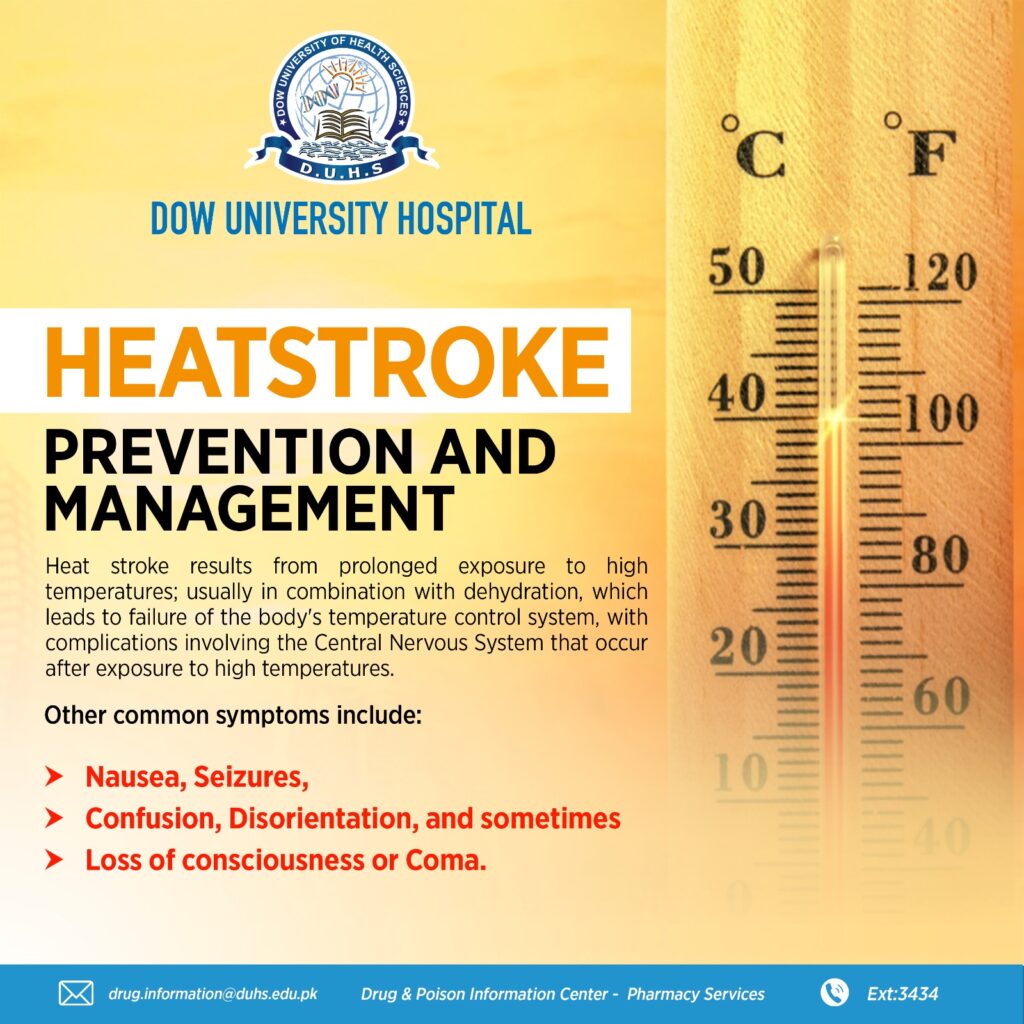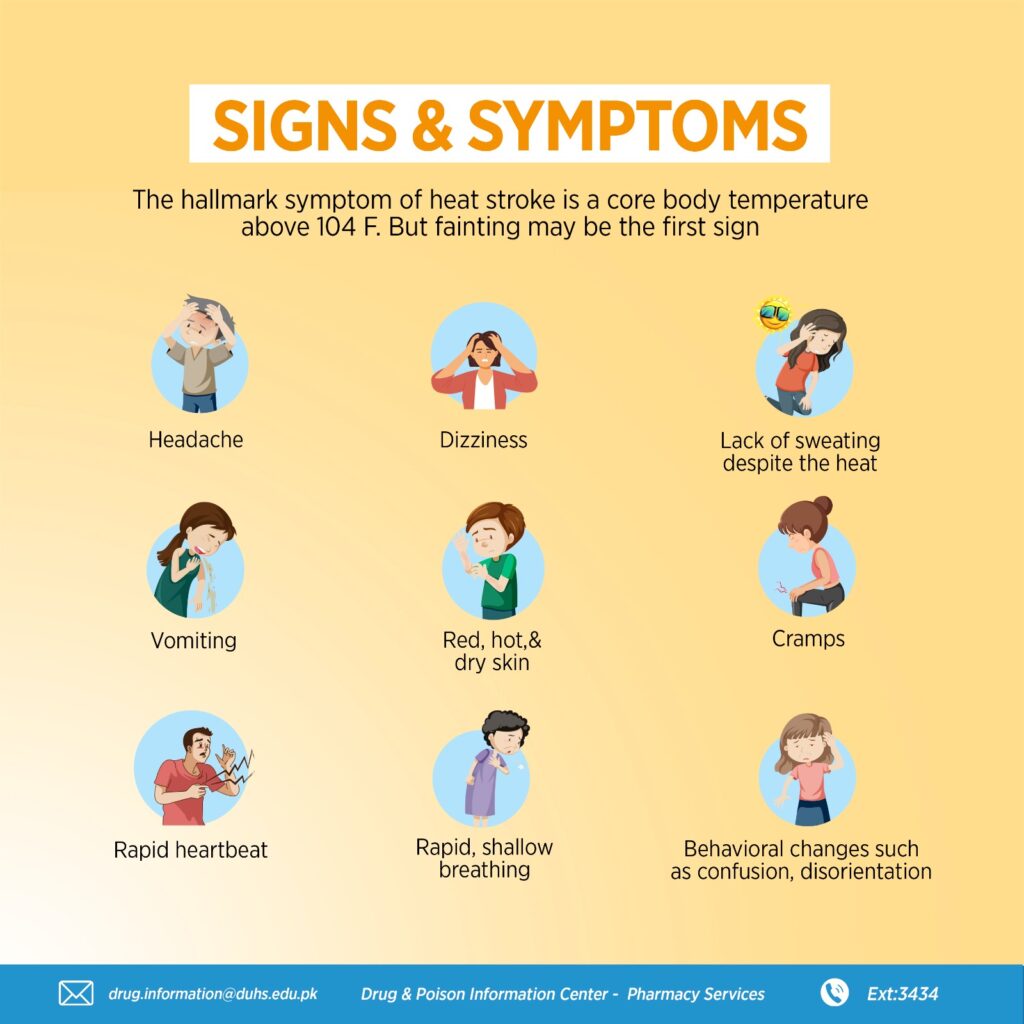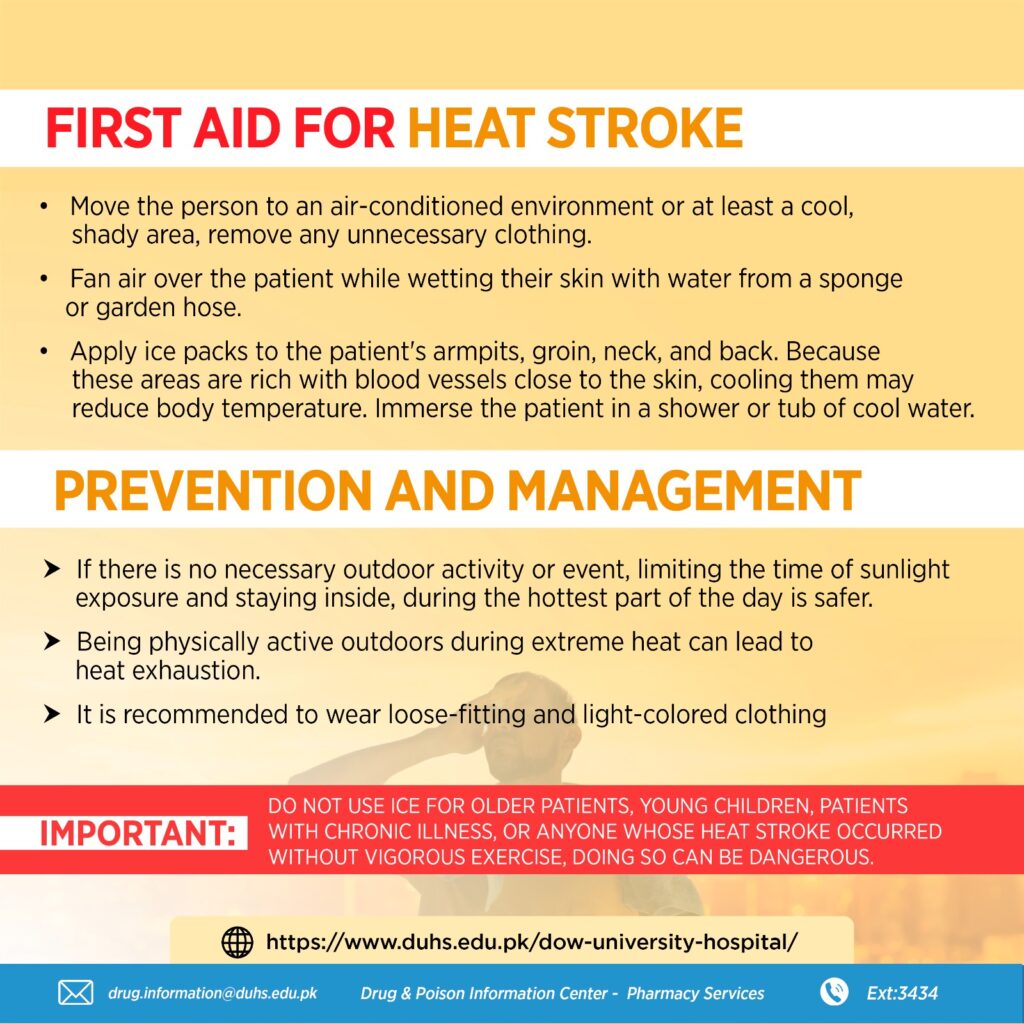Heatstroke occurs from prolonged exposure to high temperatures, often combined with dehydration, leading to the failure of the body’s temperature control system. Complications can affect the Central Nervous System.
Symptoms:
•Core body temperature above 104°F
•Fainting (first sign)
•Throbbing headache
•Dizziness and light-headedness
•Lack of sweating despite the heat
•Red, hot, and dry skin
•Muscle weakness or cramps
•Nausea and vomiting
•Rapid heartbeat (strong or weak)
•Rapid, shallow breathing
•Behavioral changes (confusion, disorientation)
Immediate Actions if Heat Stroke is Suspected:
1. Move the person to a cool or shaded area.
2. Remove unnecessary clothing.
3. Fan air over the patient and wet their skin with water.
4. Apply ice packs to the armpits, groin, neck, and back.
5. Immerse the patient in cool water if possible.
Important:
Do not use ice for older patients, young children, patients with chronic illnesses, or those whose heat stroke occurred without vigorous exercise. It can be dangerous.
Prevention:
•Limit outdoor activity during the hottest part of the day.
•Avoid physical activity outdoors during extreme heat.
•Wear loose-fitting, light-colored clothing.
For More Information:
Email: drug.information@duhs.edu.pk
EXT: 3434
OPD Number: +92 21-111-362-273 (Timings: 08:30 am – 12:00 pm)Website: https://www.duhs.edu.pk/dow-university-hospital/




